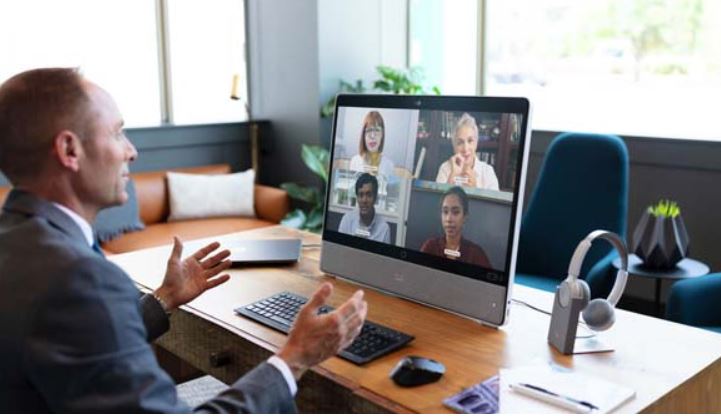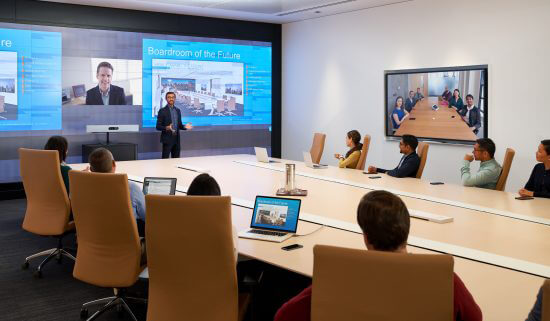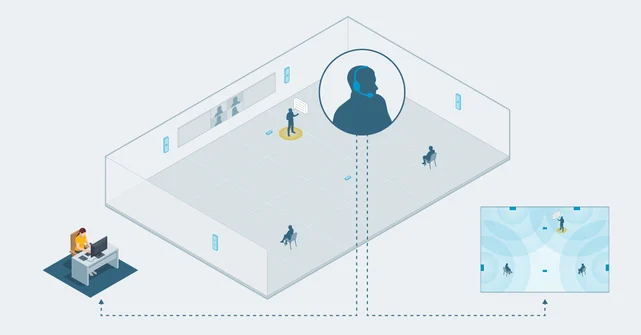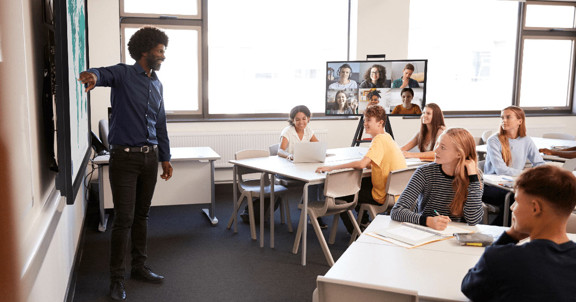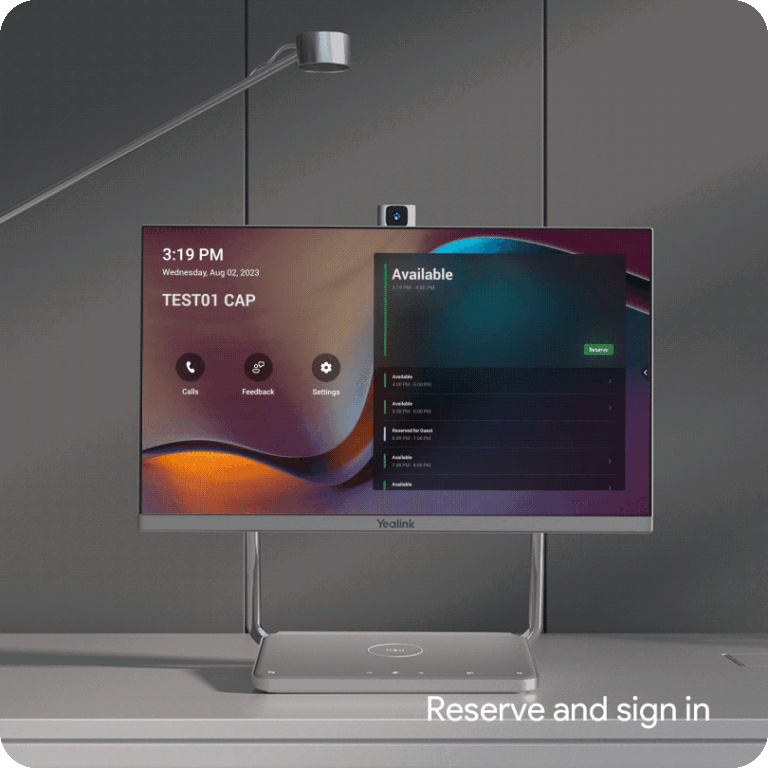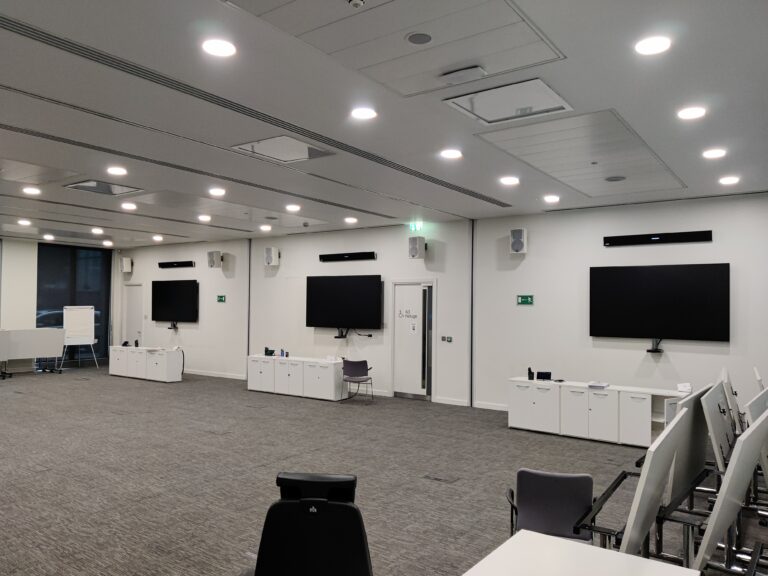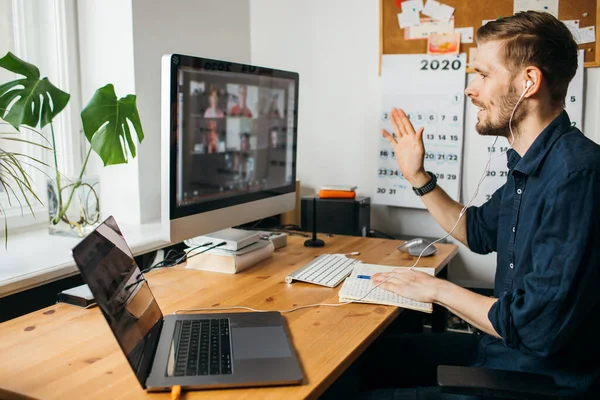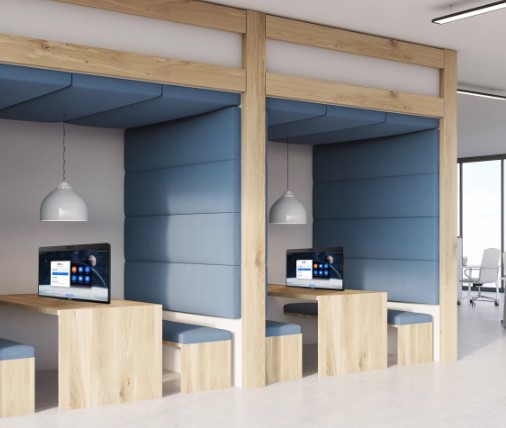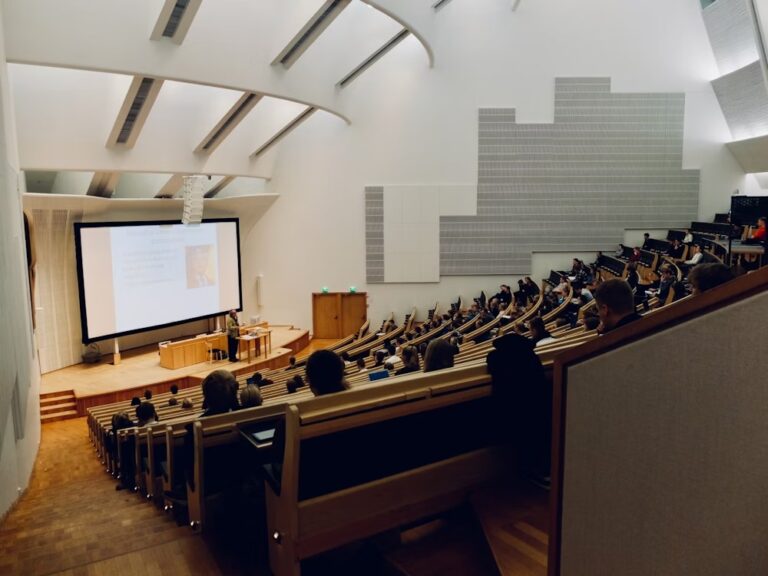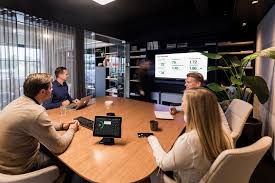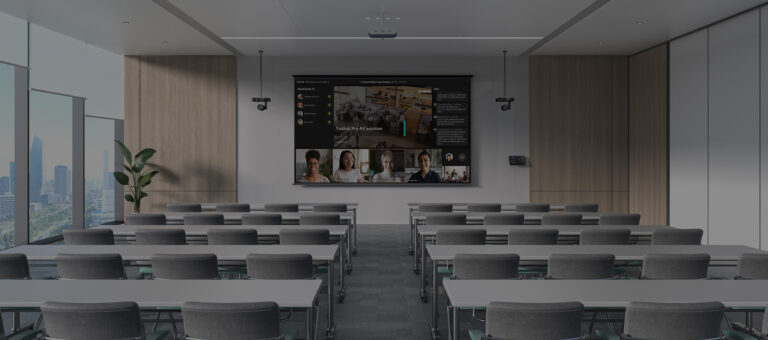Anyone who has attended a large in-person technology conference (remember those?) has probably participated in breakout sessions. These meetings provide opportunities to workshop ideas, ask questions, and/or watch presentations with a relatively small group of participants.
Breakout activities can help deepen understanding of themes covered in a keynote speech, allowing for more interaction and other elements not available during a one-sided lecture with hundreds or thousands of attendees. Often, conferences will hold several sessions simultaneously in different breakout rooms at the conference venue, giving attendees a chance to choose the ones most relevant to them.
With many events—as well as everyday meetings and trainings—now happening virtually, it’s important to thoughtfully leverage your video conferencing platform’s virtual breakout sessions to create engaging experiences. Let’s look at how virtual breakout sessions work and the benefits they provide.
An overview of breakout sessions in audio and video conferencing solutions
A virtual breakout session works a lot like a physical one: It’s a mini meeting split off from a larger meeting. That is, each breakout session is a separate forum from the one in the main meeting. Participants may move between sessions and rejoin the main meeting as needed.
An audio or video conference host might choose to set up breakout sessions for a variety of purposes, including but not limited to:
- Conducting a workshop or demonstration. At in-person conferences, physical breakout rooms work well for facilitating targeted workshops or demonstrations to smaller groups of interested attendees. Virtual breakout sessions work great for similar purposes. The presenter gains the advantage of being able to interact with a relatively small group of event attendees, answer questions, and collaborate in a more casual and relaxed atmosphere.
- Holding brief sidebar chats. Maybe the host of the main meeting needs to speak to a handful of attendees in private for a few minutes, either to prepare a little more at the start or to regroup during the middle of the meeting. Breakout sessions make this possible without having to jump to a completely new meeting or call.
- Organizing team brainstorming sessions. During a large team meeting or training session, you might want people to divide into smaller breakout groups to strategize or work on a project together. After these virtual brainstorming sessions, you can bring everyone back to the main meeting to present their ideas to the full group.
- Talking to a small set of students or trainees. Breakout sessions are especially common in educational settings where class sizes may be large and the instructor needs to address students in smaller groups by moving between breakout sessions. And just as in the corporate world, breakout sessions are great for allowing teams of students to work on group projects together.
Virtual breakout sessions allow participants to communicate via most of the same features that they would use in the main meeting. They can leverage video, audio, and chat to collaborate in real time.
Overall, breakout sessions offer a way to facilitate small group interactions during events and collaborate more productively on projects. Now let’s answer some common questions related to online breakout sessions.
How does audio and video work in a virtual breakout session?
In Webex, every breakout session is in its own web conference. If someone is in a main meeting and then goes into a breakout session, their audio gets switched to that session, and then back to the main meeting when the breakout ends. Similarly, if video is enabled, that setting transfers between sessions as well. The same controls for muting and unmuting audio and for stopping and starting video are also available, allowing for granular control of background noise and privacy.
What roles exist in breakout sessions?
There are three main roles in a Webex breakout session: host, co-host, and attendee. Permissions vary between the three, but all of them can use audio, video, and chat to communicate during the session.
How can the meeting host or co-host manage breakout sessions?
Meeting hosts have extensive control over breakout sessions. They can even pre-assign attendees to specific breakout sessions to save time during the meeting. Both the host and the co-host(s) may also:
- Start and stop breakout sessions
- Move participants between different sessions
- Ask participants to return to the main meeting
- Remove participants from breakout sessions
- Close all breakout sessions
How can meeting attendees get help during a breakout session?
Breakout sessions offer some useful features to ensure that participants get help as needed. A participant can push a button to request assistance, and then the host can navigate to their session and answer their questions.
The host can also proactively provide guidance by broadcasting a message to some or all of their breakout sessions. This message displays as a pop-up in the session and may provide a note about the agenda or just something important that all participants need to know.
How can I get started with breakout sessions?
To learn more about Webex breakout sessions and the latest functionality, visit the breakout session overview page. You can also get started with a free trial of Webex.
This blog has been reposted from the Webex Blog. See the source article here: https://blog.webex.com/video-conferencing/best-practices-for-leveraging-breakout-sessions-during-virtual-meetings-and-events/

